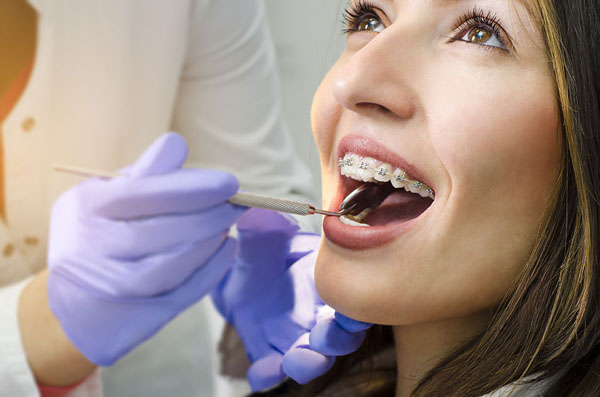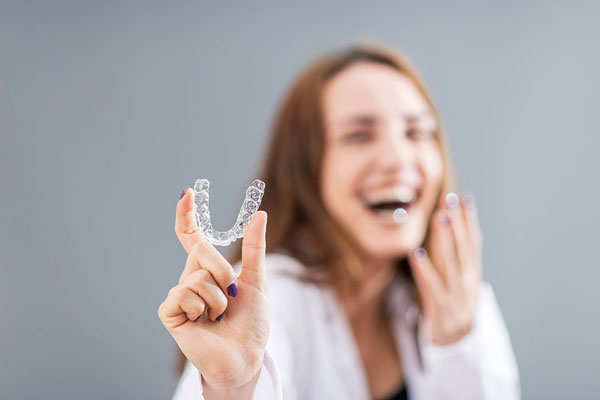How to Deal With Orthodontic Mishaps
Orthodontic treatment is a transformative journey that improves dental health and creates beautiful smiles. However, amidst this process, unexpected emergencies can occur, causing discomfort and worry for patients. These orthodontic emergencies require immediate attention and proper handling to ensure treatment progresses smoothly and effectively.
Dr. Scott Grivas of A. Scott Grivas III, DDS, INC. wants patients to be aware of these possible emergencies and to be prepared to handle them promptly. If you’re experiencing a dental emergency, contact our Sacramento dental office immediately by calling (916) 929-9222.
Common Orthodontic Emergencies
Broken Bracket or Band
A broken bracket or band might occur due to external forces or eating hard foods. If this happens, gently cover the broken piece with orthodontic wax to prevent irritation and book an appointment with your orthodontist for a prompt repair.
Poking or Irritating Wires
Wires that poke or irritate the mouth can lead to discomfort. Use a clean pencil eraser to gently push the wire into a more comfortable position. If the wire continues to irritate, place orthodontic wax on the sharp end until you can schedule an adjustment.
Mouth Sores and Ulcers
Orthodontic appliances can sometimes cause mouth sores or ulcers. Rinsing your mouth with a saltwater solution can provide relief. Avoid acidic and spicy foods, and if the sores persist, consult your orthodontist.
Loose or Lost Spacers
If a spacer becomes loose or falls out, contact your orthodontist. Spacers play a crucial role in creating space between teeth, and timely action is essential to ensure your treatment progresses smoothly.
Aligner Issues
For aligner wearers, issues like a cracked aligner or difficulty fitting a new set may arise. If a current aligner is damaged, switch to the previous one and contact your orthodontist. If a new set doesn’t fit, consult your orthodontic provider for guidance.
Trauma or Dental Injuries
Accidents happen, and orthodontic appliances can be affected. If you experience trauma or dental injuries, seek immediate dental care. Notify your orthodontist about the incident so they can provide the necessary guidance.
Preventing Orthodontic Emergencies
Taking preventive measures can significantly reduce the risk of orthodontic emergencies. Tips to prevent dental mishaps during orthodontic treatment include:
- Maintain Good Oral Hygiene: Regularly brush and floss your teeth as recommended by your orthodontist. Keeping your teeth and braces clean can prevent plaque buildup and potential issues.
- Follow Dietary Restrictions: Avoid hard, sticky, and crunchy foods that can damage your braces or orthodontic appliances. Opt for soft and braces-friendly foods to minimize the risk of breakages.
- Wear Mouthguards: If you engage in sports or physical activities, always wear a custom-fitted mouthguard to protect your braces and teeth from potential injuries.
- Avoid Harmful Habits: Refrain from chewing on pens or fingernails, as they can damage braces and affect your treatment progress.
- Attend Regular Check-ups: Schedule regular orthodontic check-ups to ensure your treatment is progressing as planned and address any potential issues early on.
Signs of an Orthodontic Emergency
Knowing the signs of an orthodontic emergency can help you identify and address problems promptly. Common signs to watch out for include:
- Pain and Discomfort: Persistent pain or discomfort in your teeth, gums, or jaw may indicate an orthodontic emergency that requires attention.
- Loose Brackets or Bands: If you notice loose or dislodged brackets or bands, contact your orthodontist to have them repaired or repositioned.
- Poking Wires: Wires that poke or irritate the cheeks or gums can cause discomfort. Use orthodontic wax to cover the protruding wire and seek professional help.
- Swollen or Bleeding Gums: Swelling or bleeding around the gums could indicate gum irritation or infection, requiring immediate attention.
- Chipped or Broken Appliances: Damaged braces or aligners can disrupt treatment progress. Contact your orthodontist to have them assessed and replaced if necessary.
Handling Orthodontic Emergencies
In the event of an orthodontic emergency, follow these general steps to get the situation under control until you can see your orthodontist:
- Remain Calm: Staying calm will help you think rationally and take appropriate actions.
- Assess the Situation: Identify the issue and determine the level of urgency.
- Temporary Solutions: If possible, use orthodontic wax to alleviate discomfort or secure loose parts.
- Contact Your Orthodontist: Reach out to your orthodontist as soon as possible to explain the situation and schedule an emergency appointment if necessary.
- Follow Professional Advice: Follow your orthodontist’s instructions for temporary solutions or pain relief until your appointment.
Remember, your orthodontist is the best person to handle orthodontic emergencies. Contact them immediately for guidance and assistance in case of any dental mishap during your treatment.
Frequently Asked Questions
How can I handle a broken bracket at home?
If you have a broken bracket, it’s essential to avoid touching or removing it. Cover the broken bracket with orthodontic wax to prevent irritation, and contact your orthodontist to schedule an appointment for repositioning or replacement.
How can I address an allergic reaction to orthodontic materials?
If you suspect an allergic reaction to orthodontic materials, look for signs of rash, itching, or swelling around the mouth or cheeks. In such cases, consult your orthodontist to determine the appropriate action.
What do I do in case of a dental injury during orthodontic treatment?
In case of dental injuries like a knocked-out tooth or broken appliance due to trauma, seek emergency dental care or visit the nearest dentist for urgent attention. Handle any damaged appliance with care to avoid further harm.
Can I replace a lost spacer at home?
No, you shouldn’t attempt to replace a lost spacer at home. Contact your orthodontist immediately to inform them about the lost spacer and to determine the next steps. Prompt replacement is essential to avoid setbacks in your treatment plan.
Be Confident in Dental Emergencies of Any Kind
Orthodontic emergencies can be unsettling, but with the right information and proactive measures, we can minimize their impact and ensure a successful treatment journey. In case of an emergency, staying calm and following temporary solutions can provide relief until you can see your orthodontist. Remember, your orthodontist is your partner in this journey, and their expertise is invaluable in handling emergencies effectively.



